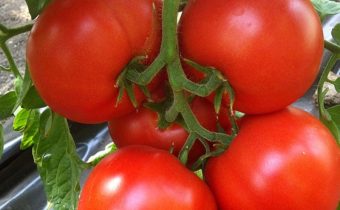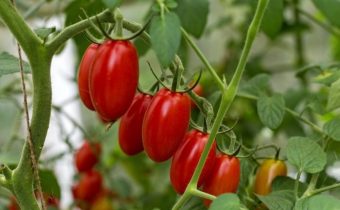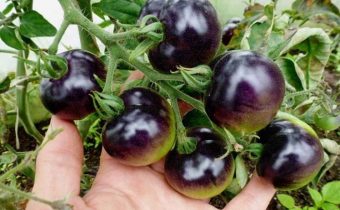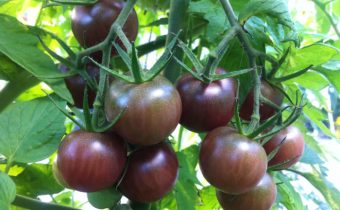Tomato "Dwarf": unpretentious fruit variety
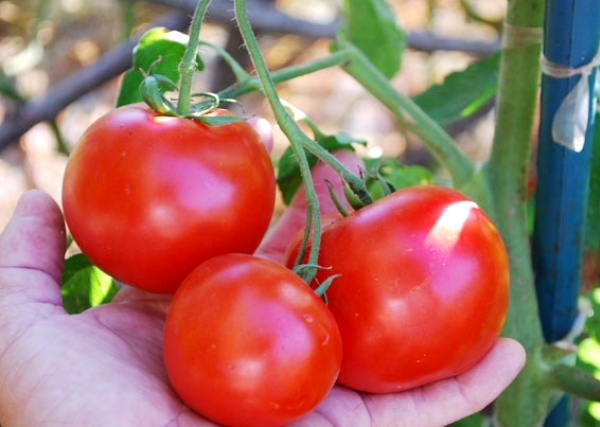
You will be pleasantly surprised to learn that there are varieties of tomatoes, which practically do not require attention to themselves, and, nevertheless, bring a good harvest of tasty fruits.
These varieties will appeal to beginners - gardeners, who have just begun their acquaintance with these plants. They will also be interested in gardeners who are loaded with a large amount of garden work or simply lazy, preferring not to expend effort to obtain a harvest.
Such unpretentious varieties include low-growing dwarf tomatoes, with the characteristics and description of the variety which you can get acquainted with.
Interesting information about the variety
This early ripe grade corresponds to the name. Plant of determinant type, that is, with limited growth, bush height reaches 50 cm.
Shrubs slightly sprawling with a small amount of foliage. The leaves are glossy, light green, medium size. Fruits leveled, eat fruits up to 3 kg from a bush.
Fruit Description
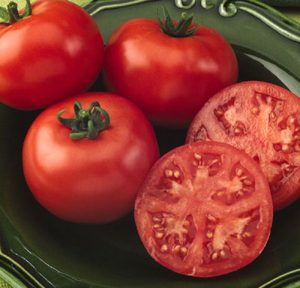
- The average fruit weight 30-35g.
- The surface of the tomato is smooth. The shape is rounded.
- In the ripening phase, the color is red.
- The taste is pleasant.
- Used in cooking for the preparation of various dishes, both fresh and in blanks.
- Well stored and transported.
Diseases and pests
The variety is resistant to macrosporosis, it is considered to be moderately resistant to late blight. However, under adverse weather conditions may be subject to some viral and fungal diseases.
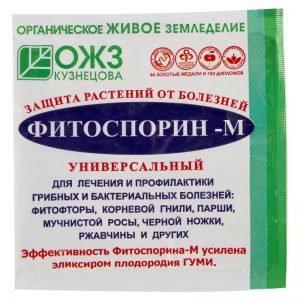 In order for the plants not to hurt, you must follow the rules of crop rotation - that is, do not plant the plants on the beds on which solanaceous crops such as potatoes, eggplants, and peppers were planted in previous seasons (2-3 years). The best precursors of tomatoes are cucumbers and cabbage.
In order for the plants not to hurt, you must follow the rules of crop rotation - that is, do not plant the plants on the beds on which solanaceous crops such as potatoes, eggplants, and peppers were planted in previous seasons (2-3 years). The best precursors of tomatoes are cucumbers and cabbage.
In order to prevent, in order to avoid infection, use biological means of protection - Fitosporin, Shining-1.
Correct crop rotation will help you with the control of pests of tomatoes - Colorado beetles, slugs, whitefly. Most of the summer residents, when these pests appear, spray the plants with folk remedies, like garlic, mustard, or pick them up manually.
See also: Tomato "Orange Elephant": healthy and tasty
What is great variety?
Tomatoes variety dwarf have a lot of fans, according to their reviews and photos of plants, it is unpretentious and convenient for growing variety. All those who planted them, note his other virtues.
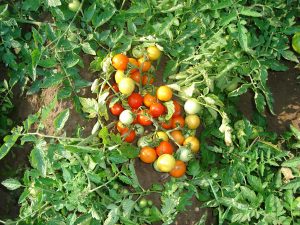
- The tomato has an early term of ripening - the first fruits appear already after 90 - 100 days after germination.
- Bushes do not need shaping and garter.
- The variety has a rather ripening in time, the number of fruits on the bushes reaches 60.
- The tomato is unpretentious and resistant to external adverse conditions and most diseases.
- Fruits do not crack, universal in application.
- Well tolerated storage and transportation.
This compact plant takes up very little space and can be planted along the tracks. At the end of the summer season, the bush can be transplanted into a separate container and continue to grow it on the balcony or veranda.
Features of tomato cultivation
Sowing seeds for seedlings is started in the last days of March - at the beginning of April, so that the plants do not freeze during planting. Plants are considered ready for planting at about 50 to 60 days.
Seeds and soil
Seeds to increase their resistance to diseases and improve germination, treated first with a solution of potassium permanganate or Fitosporin for 20 minutes, then washed, and for 5-6 hours immersed in growth stimulants or a solution of the drug Shining-1.
The land for sowing seeds is prepared in advance from disinfected garden soil mixed with mineral fertilizers, peat, compost or biohumus. The mixture should be light and breathable.
See also: Tomato varieties for polycarbonate greenhouses
Growing seedlings
Sowing is done in a seedling box that has drainage holes to avoid stagnant moisture. The earth in them is prepared in advance, moistened and watered with the Radiance drug.
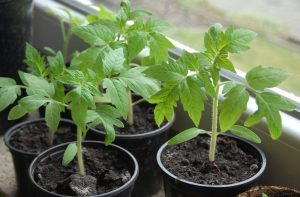 The distance between the seeds when sowing 2-3 cm, above, they are filled with a layer of earth with a thickness of 5-7mm. Boxes are tightly closed, but they are not sealed and are kept in a warm place until the emergence of shoots - near batteries or in the kitchen.
The distance between the seeds when sowing 2-3 cm, above, they are filled with a layer of earth with a thickness of 5-7mm. Boxes are tightly closed, but they are not sealed and are kept in a warm place until the emergence of shoots - near batteries or in the kitchen.
At the first appearance of sprouts, the seedlings are placed on window sills or under artificial light lamps in order to avoid stretching.
The next two weeks, the plants are kept at a lower temperature (for quenching), for which they are exposed to closed loggias or verandas. All this time, the soil is kept moist, but in no case poured.
After quenching, the temperature is increased, the illumination is maintained at its maximum for 11-12 hours. If the seedlings do not grow well, they feed additional fertilizers for the seedlings.
Transplant to soil
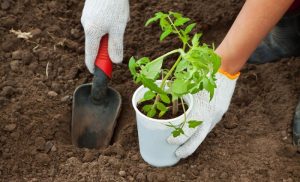 Tomatoes are planted in open ground, when the earth warms and the threat of night frost disappears. Despite the resistance to cold snaps, they do not tolerate negative temperatures.
Tomatoes are planted in open ground, when the earth warms and the threat of night frost disappears. Despite the resistance to cold snaps, they do not tolerate negative temperatures.
Plants are planted in the open field quite tightly - in the rows between the holes leave 30-40cm, and between the rows - 40-50cm. Compost, ash and mineral fertilizers are added to the wells before planting. The plants are abundantly watered and covered against burns if the weather is sunny.
See also: The most fruitful, sweet varieties of tomato
Care
Plants are unpretentious and do not require garters and the formation of bushes. In the following days, the care consists of watering with the drying of the soil, feeding and weeding.
Gradual ripening of the fruit will allow harvesting within 3-4 weeks.
Video: Caring for tomatoes. First important steps



